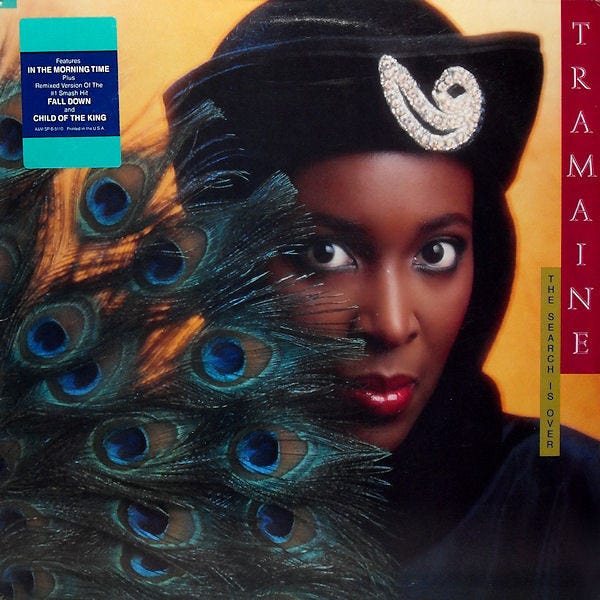Moving Into 1985
A journey into the year that might have forever changed the direction of spiritual music.
At the beginning of the year, I wrote a short entry calling 1985 “the pinnacle year—the year that might have forever changed the direction of spiritual music.”
Everything that came before it helped create it, and everything that came after resulted from it. It was an all-too-brief window where innovative artists broke the rules that dictated where, when, and who Christian music was intended to reach. On a personal level, no year has impacted me more. Much of what I believe about being an artist of faith came from what I read, heard, and witnessed during the 12 months of that year.
In 1983 and 1984, contemporary Christian and gospel music experienced the same explosion as pop music. Billboard reported that Sparrow Records had seen its sales rise by 31% in 1983 alone. Christian music surpassed the sales of both jazz and classical music, and the major secular labels were taking note. 1984 produced albums on the cutting edge of this new cohort of Christian artists writing about their faith in relatable and clever ways against the backdrop of state-of-the-art production. While Steve Taylor’s Meltdown, Sheila Walsh’s Triumph in the Air, and Rez Band’s Hostage may not have been the most-played albums on your local Christian radio station, young people were buying the albums in significant numbers. Their videos were also breaking through on secular video programming, finding new ears and eyes, some that may not have even realized they were listening to Christian music.
At the forefront, undoubtedly, was Amy Grant—an artist doe-eyed enough to endear Christian listeners, but gutsy enough to attract people listening to Top 40 radio. 1982’s Age to Age was certified platinum in 1984, and that year’s Straight Ahead was quickly heading in that direction. Despite being highly criticized (by the same fans who had helped Age to Age go platinum) for her ambitious ideas and methods, she maintained an intellectual grounding that made her reasons for wanting to be in the mainstream clear. Christianity Today quoted her as saying,
“There is a group of Christian artists who want to devote their lives to writing the music for the church in the 1980s—the new worship music, the praise music, and the family music. But I also feel like there’s a group of us who…want to be a voice in our culture.”
As 1984 turned into 1985, secular artists like Philip Bailey and Deniece Williams were releasing albums or making plans to release albums for the CCM market, intending for their pop audiences to follow them as they further revealed themselves, sharing not just their ideas about love, but life through a faith-based lens. Christian culture did not fully embrace these artists. After all, their reality as pop artists who happened to be Christians presented a possibility that many of the gatekeepers wished to stultify. To accept these artists would have meant that years of Christian separatism, which prohibited artists from being “in the world”, was an error. With several Christian artists (like Tramaine Hawkins, Leslie Phillips, Kathy Troccoli and Russ Taff) being acclaimed by critics as having potential to join them on the pop side, it presented a theological and commercial conundrum that produced some of the most interesting, intellectually challenging, and musically progressive art to emerge from the CCM and gospel genres.
I’ve covered some of this era’s most important artists and albums since the inception of God’s Music Is My Life, and I wanted to re-share those features today as I begin the next deep dive into 1985 and its significance.
Amy Grant—Unguarded
No album stirred the Christian pot of controversy more than Amy Grant’s Unguarded did. This article explores the building of Amy’s career and the moment when Unguarded was presented to the world.
Unguarding Amy Grant
There wasn’t a bigger artist in Contemporary Christian Music in 1985 than Amy Grant. The eighties had slowly, and a bit unpredictably, become hers. Amy was still in high school when her career began in 1977, singing a mix of her own compositions and well-crafted, radio-ready hits by other writers like “
Tramaine Hawkins—Fall Down (Spirit of Love)
Tramaine Hawkins’ contemporary era is (more often than not) disregarded by a younger generation that sees The Clark Sisters’ “You Brought the Sunshine” as the central crossover moment of gospel music. But Tramaine had the bigger hit (#1 on Billboard’s Dance Chart, thank you very much!) and took a massive risk by being willing to go into the clubs and the mainstream avenues that having such a large hit afforded her. This article documents that story with quotes from many of her collaborators from this much-overlooked chapter of her career.
New Time Religion: The Holy Ghost Falls Down in the Club
Writer’s Note: Thank you to A. Jeffrey LaValley, Loris Holland, Vassal Benford, Bennie Diggs and Preston Glass who shared their memories of collaborating with Tramaine Hawkins with me, and to David Nathan.
Teri DeSario—Voices in the Wind
Not every artist in this era was trying to carve out a slice of life in pop music. Teri DeSario had already been there, done that, and was very much enjoying writing about her theological and ideological journey as a new Christian. Her embrace of Christian mystics and feminism, however, went against the grain of the new world she was inhabiting. To show just how different the times were, she somehow managed to score a half dozen Christian radio hits and a Grammy nomination with two albums that said things no one in Christian music had said before or has said since. I interviewed Teri for my undergraduate thesis about the experiences of women in CCM and repurposed our interview for this piece.
I Don't Wanna Be A Soldier: Teri DeSario Heeds The Call
Welcome to Week #2 of Women’s History Month! I’m reprising the first full artist feature I ever posted here. We’ve grown quite a bit since this article first ran in 2021 and I want to make sure anyone who has joined us since then sees this. I often say that Teri DeSario is one of the most important artists to have passed through Contemporary Christian M…
The R&B Impact
In the pop world, 1984-1985 were significant years as the sounds that radio programmers were playing reflected the massive impact that Black music had on young people coming of age in the sixties and seventies. The children who had grown up listening to Motown were now making music and were continuing the work of breaking down the colorlines that still existed.
Variety noted this shift in a 1984 feature called “Radio Breaking Racial Barriers”: “During a check on weekly callout response data, a major market programmer recently found that nine of the ten records in a particular county in his listening area were by black artists such as Jocelyn Brown, Peabo Bryson, Eddie Grant, Tina Turner and Prince. The sole exception was a black music-influenced dance track, Madonna’s “Lucky Star.”
Columnist Steve Holsey also noted this change, writing, “From Prince to Phil Collins to Sade to Madonna to the Power Station to Luther Vandross to the combined efforts of USA for Africa...at no time since the ‘60s have Black and Black-influenced artists so dominated the pop charts…What is most encouraging is the general feeling that the increased presence of Black artists is a condition that is here to stay–that the record-buying public has caught up to the source of its most valued music.”
In 1985, the same thing was happening on Christian radio, and artists like Jessy Dixon, Howard McCrary, Russ Taff, and Kathy Troccoli were at the forefront of that shift.
1985: Where R&B and CCM Meet
God's Music Is My Life is a reader-supported publication. To receive new posts and support my work, consider becoming a free or paid subscriber.








